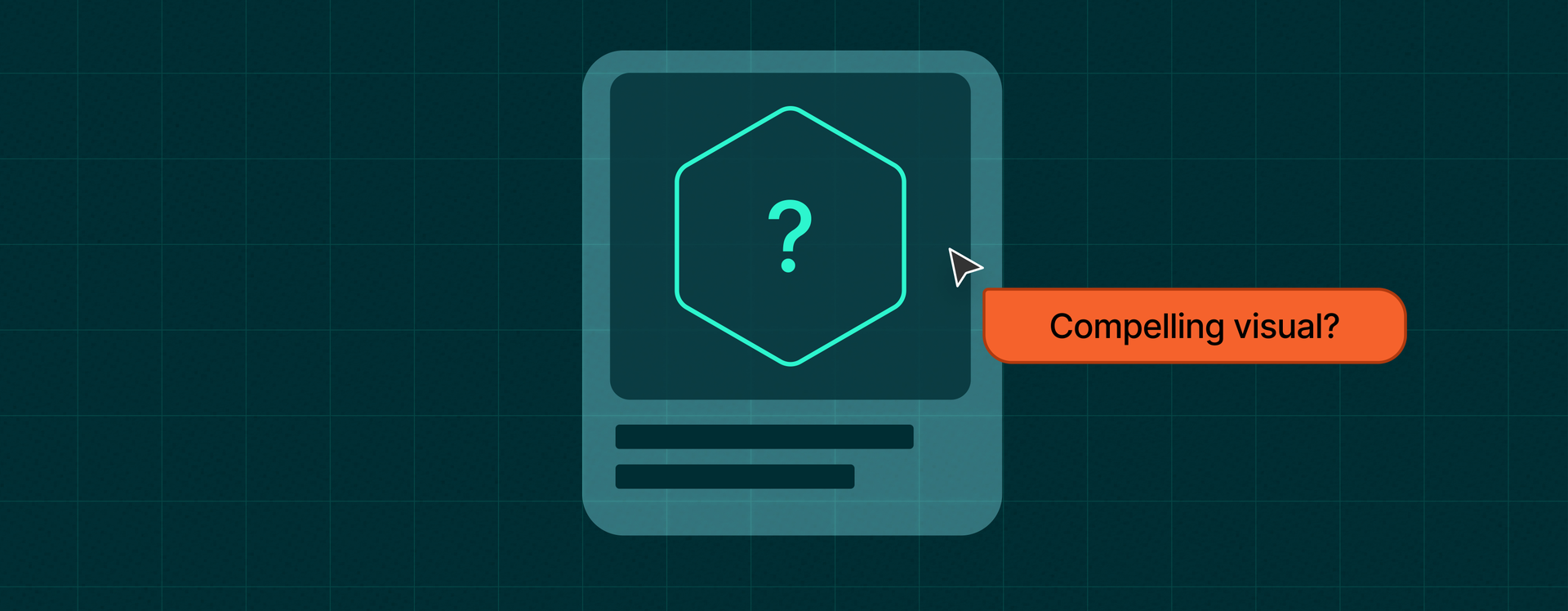Your business would not exist without customers.
Attracting and landing new customers is arguably the most important activity financial services organizations and fintechs should focus on when launching—and growing—their businesses.
If you want to attract customers and grow rapidly, you should make developing and executing a customer acquisition strategy one of your highest priorities.
Today, we’re covering everything you need to know about customer acquisition, including what it is, why it’s important to business growth, and how to build a winning customer acquisition strategy from scratch.
Let’s dig in.
What Is Customer Acquisition?
Customer acquisition is the process of getting new customers to purchase your products or services.
You may be asking: “Isn’t that just marketing?”
Well, no.
As HubSpot puts it, “Marketing aims to build awareness; customer acquisition looks to drive action.” In other words, marketing is the all-encompassing act of promoting your offering, while customer acquisition is the process laser-focused on gaining customers.
At CSTMR, we divide the customer journey in four key stages: awareness, attraction, nurture, and conversion. A successful acquisition strategy aims to seamlessly guide prospective customers through each stage, leveraging the right channels, messages, and methods to encourage them to become customers.
It sounds simple enough, but developing a lead-generating, customer-converting, objection-busting, goals-smashing customer acquisition strategy is much more involved than it seems.
But rest assured: as you’ll see in the next section, the juice is worth the squeeze.
The Importance of Customer Acquisition in Business Growth
Customer acquisition is becoming more difficult in the financial services industry as more innovative solutions and companies enter the market, promising new and better ways of doing things.
Just look at how Michael Kitces’ famous AdvisorTech Solutions Map has grown over the years, and you’ll see just how many options prospective customers now have to choose from.
Apart from innovation-fueled competition, fintech brands must also contend with an ever-present concern: trust.
In our industry, trust is earned; it’s not a commodity. Therefore, gaining prospects’ trust is the first step toward converting them to customers.
Crafting a customer acquisition strategy can help you overcome these unique industry challenges. But there are several other reasons you may want to implement a formalized acquisition strategy:
- Revenue generation is the meat and potatoes of customer acquisition. A formal strategy helps your team grow your business by expanding your customer base, offsetting churn, and generating consistent revenue.
- Whether you want to explore expanding into new markets and territories or launch new offerings, customer acquisition provides a powerful means to test the waters for business expansion.
- You gain deep customer insights by going through the process of developing a cohesive, comprehensive customer acquisition strategy. It will inherently provide you with a keen awareness of your audience.
- With a customer acquisition strategy that involves your sales team and addresses the lead handover process, you can build a sustainable sales pipeline.
Customer acquisition is the quarterback of your growth playbook: it allows you to look forward and go long. But how do you begin to develop your strategy and acquire new customers?
Understanding Customer Acquisition Channels
Customer acquisition channels are the mechanisms companies use to get their message into the market.
Which channels you deploy in your customer acquisition strategy will depend on your goals, audience characteristics, buying behavior, and available resources. Let’s take a look at the possibilities.
Content Marketing
Content marketing is one of the best channels to cement your expertise, gain a following, build your brand, and convert prospects into leads (and, eventually, leads into customers). It should be one of the foundations of your customer acquisition strategy. To build effective content marketing:
- Create and disseminate valuable, educational blog content to stand out as a thought leader, attract and nurture readers, and ensure your company is searchable through target keywords.
- Offer free content giveaways and lead magnets (such as a report) packed with value to drive followers into your marketing funnel.
- Follow SEO best practices to turn your website and blog into an inbound marketing machine.
A solid content marketing strategy will help tie all other efforts together.
Social Media Marketing
Effective social media marketing involves so much more than posting intermittent content now and again. It means auditing your social profiles, building campaigns with targeted messaging, creating and disseminating content, managing communities, listening to trending topics, analyzing results, and more:
- Consistent social media posting on your most engaged channels keeps your brand top-of-mind, even if you aren’t actively selling your offering on social media.
- Building community through social media groups creates a forum and shares more personalized value with your audience.
- Run polls and Q&A sessions to interact with your audience while gaining helpful feedback and insights.
Additionally, a well-executed social media strategy not only strengthens your relationship with current followers but also expands your reach and amplifies word of mouth (WOM) as your community grows. As your social media presence becomes more vibrant and engaging, satisfied customers are more likely to share their positive experiences, further extending your brand’s visibility and influence.
Of course, a fundamental part of social media marketing is knowing how your audience interacts with each of the social platforms that you work on. You should think about how and what to post on each platform.
Email Marketing
Email marketing is still one of the most effective channels for customer acquisition. Once you have a prospect’s email address, you’ve already accomplished piquing their interest. Now you just need to continue providing value:
- Pack a punch right off the bat with an automated welcome sequence that sets the stage for what new subscribers can expect, what you’ll deliver, and how often they can expect it.
- Personalize your email campaigns by speaking directly to readers’ challenges, pain points, and motivations in your subject lines and email content.
- Build email nurtures tailored with specific content for every customer journey stage.
For email marketing to work, your email sender score needs to be high enough—otherwise, your audience won’t even receive your emails.
Digital (“Paid”) Advertising
Digital advertising—including paid media, PPC, paid social media, and sponsored content—lets you test different marketing messages, get your offering in front of your ideal audience, and drive leads. Some ways you can add digital advertising to your customer acquisition strategy include:
- Running pay-per-click (PPC) campaigns to capture search intent for keywords relevant to your brand or offering. Done strategically, this lets you tap into new audiences who may be more aware of your competition.
- Conducting a social media paid ad campaign to target your ideal audience more directly. Facebook and LinkedIn allow you to choose precise criteria and customize your campaigns, enabling you to test different messages to different audiences and get real-time insights.
- Partnering with an industry publication (like Forbes Advisor) to feature paid content on their site, in their email newsletter, or through a webinar. This allows you to tap into a large audience to expand your reach by offering free value.
With sound digital advertising you’ll reach a wide, but also precise audience. You can then easily measure results and adjust in real-time, so you don’t spend a penny where and how you shouldn’t.
Influencer Marketing
Influencer marketing taps into the audience and credibility of influential people in your industry. One of the major benefits of influencer marketing is that the influencers’ audience already knows, likes, and trusts them, so their recommendations go far. With the right offer, you can accelerate prospects’ getting on that level with your brand:
- Engaged in targeted outreach to connect with influencers whose audience profile aligns closely with your target market. Develop a compelling offer that motivates the influencer to promote your brand and encourages their followers to take action.
- Establish ambassador programs that incentivize your customers to act as brand ambassadors. Offer them opportunities to earn commissions on any referrals they generate, enhancing their motivation to promote your brand.
Remember: authenticity matters.
Align with influencers who genuinely believe in your brand and can promote it authentically. Audiences are adept at spotting insincere endorsements, so it’s crucial to partner with influencers who resonate with your brand values and message. Ensure that their promotion feels natural and consistent with your brand’s identity, rather than simply choosing influencers based on their follower count.
Through influencer marketing, you can extend your reach by tapping into the established followings of credible figures. Influencers not only help spread your brand message but also lend their authenticity to your value proposition, creating more meaningful connections with potential customers.
Partnerships and Collaborations
Partnering with other brands can lead to innovative marketing collaborations that open the door for accelerated customer acquisition. Strategic marketing partnerships with complementary—not competing—brands can be as creative as you want them to be:
- Identify co-marketing opportunities and joint initiatives such as guest blog posts on relevant topics, co-hosted webinars with shared promotion, and participation in each other’s events to reach new audiences and enhance engagement.
- Collaborate on product or service marketing initiatives by offering bundled services or integrating with your partners’ platforms.
Effective partnerships expose each brand to a potentially new audience, allowing both to leverage the established equity of the other. This cross-exposure helps build credibility and attract new customers who might not have discovered your brand otherwise. If a partnership is a one-time event, it can still create a sense of exclusivity and generate excitement among customers and prospects.
With the right partnership, you can have a classic win-win scenario. If it’s a one-off, you can even create a sense of exclusivity for customers and prospects.
Events and Webinars
Hosting in-person and online events and webinars is a great way to reach new audiences, increase brand awareness, and drive leads by forming meaningful connections:
- Some trade shows in the financial services industry will provide sponsors with an attendee list. Identify shows that share this list with sponsors so you can more easily communicate with attendees.
- Run virtual events—like webinars or virtual conferences—and get recognizable brands and speakers to participate. Bonus points if they promote the event to their audience and expand your reach.
- If you don’t have the budget for event sponsorships, consider attending trade shows and running some guerrilla marketing campaigns. These low-cost, unconventional marketing tactics increase word-of-mouth and involve taking to the street to generate awareness.
Ready to put it all together to craft a customer acquisition strategy that accelerates your lead conversion?
How to Develop a Successful Customer Acquisition Strategy
Before deciding which channels to leverage in your customer acquisition strategy, some strategic legwork is required to ensure you’re meeting your customers where they are.
Step #1: Deeply Understand Your Customers
Attracting more customers to your business means understanding who they are, their goals, challenges, and behaviors.
Start by reviewing your customer personas for information about their:
- Demographics.
- Motivations.
- Online presence and behavior.
- Shopping habits.
- Buying patterns.
This step is non-negotiable as it reveals where your ideal customers are hanging out online. Are they scrolling LinkedIn? Do they trust certain influencers or forums? Where do they consume their news?
Step #2: Map Your Customer Journey
Do you know how your customers found you? Do you know what they first clicked on or what drove them to purchase?
Understanding user trends and the journey your customers take gives you insight into how you can replicate that journey for others. Run surveys and interviews with your customer base today and see if patterns emerge.
Heatmaps can show you the path your prospects take around your website. This tells you what content is most intriguing to them and identifies opportunities to create a smoother browsing experience.
Step #3: Conduct Competitive Analysis
Analyzing competitor marketing channels can show you where your competitors are finding success.
If they dominate at the top of search engine results pages (SERPs), ranking for all your high-value keywords—then you may be able to assume they’re seeing success with content marketing and SEO.
If they’re at every major industry event with a flashy booth front row center, their event strategy may have proven successful.
Keeping a pulse on the competition is one of the best ways to start, and it can help you identify competitive advantages to test in your customer acquisition strategy.
Step #4: Set Objectives and Goals
You can’t map your road ahead without knowing where you want to go.
Take a moment to define your version of success—your version, and no other brand’s. Set goals and key performance indicators (KPIs) to track throughout the process. You may want to consider:
- Budgetary constraints.
- Average customer acquisition cost (CAC).
- Average customer lifetime value (LTV).
- Conversion rate goals.
- Return on investment (ROI) goals.
- Churn rate.
HubSpot has a helpful, free tool to help you calculate some of these metrics.
Step #5: Choose Your Customer Acquisition Channels
Take stock of which channels you use today. Where do you actively post? Where’s your biggest audience? What have you never explored before that may be worth testing? Where does your audience go for the information they seek?
Next, analyze what content has performed well in the past. Go through each of your active distribution channels and note what type of content saw the highest engagement, the most click-throughs, the most time-on-page, and so on. This can give you clues about the type of content your audience is most interested in.
Finally, decide if you need to implement new technology to make your customer acquisition strategy as successful as possible. Technology you may want to consider includes:
- CRM systems like HubSpot, Salesforce Financial Services Cloud, or Zoho.
- Email marketing automation like Mailchimp, Hubspot, or Constant Contact.
- Chatbots like ManyChat or Zendesk.
- Advertising platforms like LinkedIn Campaign Manager or Meta Ads Manager.
- Analytics platforms like Google Analytics.
- Heatmap software like Hotjar or Fullstory.
Once your content channels are sorted and new technology implemented, it’s time for the fun stuff.
Step #6: Document Your Customer Acquisition Strategy
Create a detailed action plan that outlines your campaign concepts, topic ideas, timelines, milestone check-ins, and goals. This is your customer acquisition playbook.
Work with your sales team to establish clear ownership of goals and refine the lead-handover process.
Your sales team is also a goldmine for information on your content ideation. Keeping the lines of communication open with them is essential to learn and implement everything about and for your customer acquisition strategy.
Step #7: Monitor Customer Acquisition Performance
A successful customer acquisition strategy is always dynamic. What worked for you five years ago likely doesn’t work for you today.
In addition to monitoring the KPIs outlined above, consider running A/B tests.
A/B testing—or split testing—is a way to compare two variations of the same marketing piece. An A/B test will let you control all variables except one part of the marketing piece to compare which one performed better.
Consider Customer Acquisition With CSTMR
Customers are the lifeblood of your business.
But without a customer acquisition strategy, attracting new customers becomes a lot harder than it needs to be.
For more than ten years, CSTMR has been helping fintechs and financial services brands grow by putting the acquisition strategies highlighted here to work in the real world. If it’s time to formalize your strategy and create a repeatable, scalable growth process, we’re here to help. Reach out for a free consultation today.




